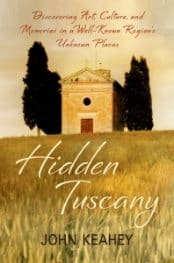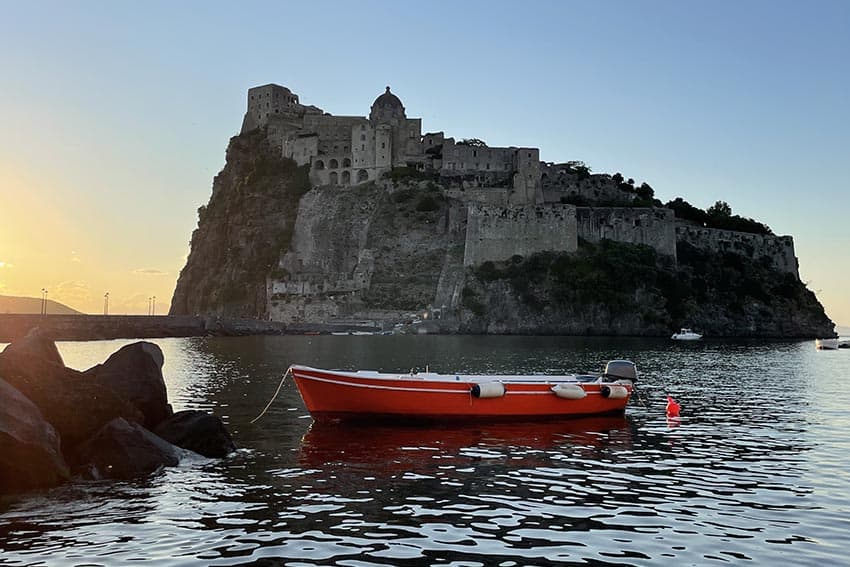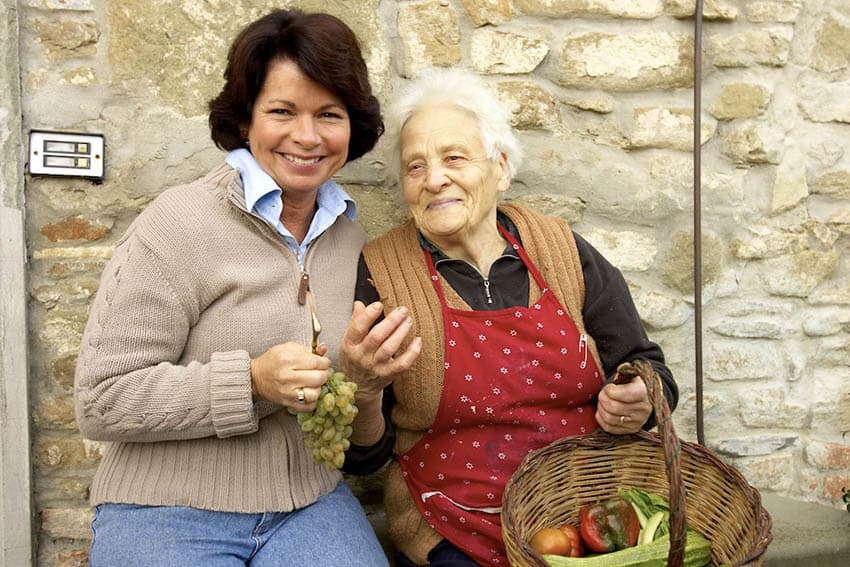Riding the Roads of Hidden Tuscany
John Keahey is a travel writer and former award-winning newsman. A native of Idaho and graduate of the University of Utah with degrees in history and marketing, he first stepped onto Italian soil in 1986.
Enchanted by what he found in Tuscany—stunning ancient ruins, unique food, magnificent countryside, and, most important, warm and engaging people—he has returned nearly every year since. His other travel narratives include Seeking Sicily: A Cultural Journey Though Myth and Reality in the Heart of the Mediterranean, Venice Against the Sea: A City Besieged, and A Sweet and Glorious Land: Revisiting the Ionian Sea. Keahey lives in Salt Lake City, Utah, with his wife and partner, Connie Disney, a freelance book designer.
In his new book, Hidden Tuscany, John Keahey explores the inner soul of one of Italy’s most well-known regions. Tuscany, like the rest of Italy’s enchanting landscapes, has a rich history and culture behind the usual tourist destinations of Chianti, Florence, and Siena.
Keahey encourages travelers to explore the western part of the region to see the timeless fishing villages, succulent cherry orchards, and sun-soaked hills of the beautiful region. Winding roads that hold tales of ancient Italy and delectable dishes harvested from fields centuries old are just some of the wonders outlined in Keahey’s book.

Chapter Five: The Great Loop
My friend Filippo Tofani and I slide out of Pietrasanta on a bright, cloudless day with temperatures finally warm enough for us to shed light jackets and vests.
Since my arrival in Pietrasanta two weeks earlier, it has rained almost daily and maintained, for coastal western Tuscany in late April, an unseasonal chill that mocked my decision to turn off the heat in my apartment.
But I got by, and on this day, basking in the warmth, Filippo and I will make a great loop, from Pietrasanta to Lucca and then into the mountains through the valley of the Serchio River.
This valley, which in medieval times provided Rome-bound pilgrims an alternative, more-inland stretch of the Via Francigena by following the Via Cassia, separates the coastal Apuan range from the Apennine Mountains.
Appennine in Tuscany
The Apuan range ends just before Pisa, while the Apennine, referred to as the “spine” of Italy, runs nearly the length of the peninsula, north to south, ending when it drops into the Ionian Sea where the Aspromonte massif dominates Italy’s toe.
Our route for the daylong journey avoids going east into the Apennines where we could have continued on to Modena and Bologna on narrow provincial roads that follow tracks first carved by medieval travelers. That’s for another time. My focus is western Tuscany, and the eastern slope of the Apuan Alps is as far as I want to go.
Blue Highways
We are traveling “blue” highways and staying off the autostrada, Italy’s version of the U.S. interstate highway system. It is possible, I believe in nearly all cases throughout Italy, to avoid the autostrada, and its occasional tolls, for a more leisurely drive from village to village, town to town, city to city on roads marked with signs painted blue. With the marvelous valley carved by the Serchio, we have no other option but slate and provincial roads.
We leave Pietrasanta and roll into a provincial road numbered SS439. This narrow, two-lane byway through coastal foothills follows the original medieval route to Lucca, the provincial capital of those who long ago ruled the area around Pietrasanta.
Of course, at various times Pietrasanta and its surrounding Tuscany villages that make up Versilia also were ruled from Florence, farther to the east, and others from the north had their shot at control as well-until Italy’s unification in 1861 changed all that.

At Lucca we turn toward the north on SS12 and, within a few miles, stop at the village of Borgo Mozzano.
We want to see an ancient bridge over the Serchio. It was commissioned in early AD 1100 by Countess Matilda of Tuscany for merchants and pilgrims traveling to Rome via the eastern route of the Via Francigena, to provide them an easier way to cross the river.
Built of rough, gray-stone blocks carved from the nearby mountain, the bridge’s unusual design features a high arch, flanked on the east side by three lesser arches, and on the west by an arch added in the early 1900s to strengthen the ancient bridge against potential flooding and to accommodate a railroad line.
There is a definite shift in the light gray hue of the stones used to extend the bridge over the rails and the older, darker stones of the twelfth-century bridge.
The bridge, with its footpath of the medium-size pavers, was wide enough for the donkey, mule, and horse carts of Matilda’s time. Today, it is a footbridge. It must make for a thrilling bicycle ride down the highest arch over the slippery stones. A crash on damp, weathered pavers would be painful indeed; there are no soft spots here.
A Deep River, an Ancient Dam
The river is deep at this point, backed up by a low-slung power-generating dam perhaps five hundred yards downstream. There are many such dams on this river, all operated and maintained by Italy’s power consortium, INEL.
The bridge has stood for nearly a millennium; it is beautiful, and, with its combination of high and low arches, it remains an engineering marvel, particularly when you consider it was constructed in the early 1100s by a society just emerging from Europe’s Dark Ages.

Officially, Matilda’s bridge is the Ponte della Maddalena. But people commonly refer to it as the Devil’s Bridge, ponte di diavolo. As the local legend goes, the medieval engineers were stymied over how to build the highest arch, which bulges upward at least two times higher than the other arches in order to allow for unimpeded river traffic.
The builders reputedly appealed to the devil for his help; he agreed, but with the demand that he get the soul of the first to cross the structure. They agreed, finished the bridge and its tall arch overnight, and then sent a pig across.
(A Cadogan guide published in 2010 claims the villagers sent over a dog. Either way, the deception was well played.) The devil was so frustrated that he jumped into the fast-flowing deep waters of the Serchio and disappeared.
Strolling through Borgo
Leaving the bridge, we take a short stroll through Borgo a Mozzano on the river’s west bank. We pass a building, now housing a doctor’s office, which is identified as a former convent, likely one that would have offered Rome-bound pilgrims a place to spend the night.
A short way on, we spot a narrow, stone-paved walkway that cuts straight up the steep hillside to what appears to be an upper portion of Borgo a Mozzano.

Filippo, who knows well the history of his beloved Tuscany and whose well-worn knowledge never led me astray, suggests that these walkways were actually the original medieval roads, which were replaced by what cars use today-modern paved streets that slowly wind their way upward in gentle curves and sharp switchbacks.
Miraculously, these ancient “roads” were left in peace.
We choose the medieval way, straight up. This pathway no wider than four feet is bounded on each side by a tightly fitted rock wall, holding back the edges of wide-open fields and clusters of olive trees. It is hard going but worth the journey.
We reach the top and step onto the pavement of a small neighborhood street leading us to a church that likely also was a featured stop for pilgrims.
Clues inside–a high, painted ceiling and figures showing tendencies toward the Baroque–tell us it must have been heavily expanded, perhaps in the seventeenth of later centuries, from its smaller, earlier state. We never became certain of its name, but references inside and out indicated it was named after San Giovanni; the parish is Battista-Cerreto, of the Parish of Saint John the Baptist.
After admiring this little church high above the Devil’s Bridge, we trace our path back down, passing on the steepest part of a middle-aged woman lugging plastic bags from the shops below. Even she preferred the steep climb to the gentle, but far longer, twentieth-century paved roadway.
Hitler’s Gothic Line
During World War II, Borgo a Mozzano also was, in this narrow valley, a key spot in Hitler’s Gothic Line, which ran in a two-hundred-mile irregular line from coast to coast. Renamed the Green Line in early 1944, this roughly ten-mile-wide belt of fortifications-concrete tank barriers, minefields, and reinforced gun emplacements-began just north of Pietrasanta on the Ligurian Sea.
It stretched through the mountains past the marble quarries of Massa and Carrara, to just north of Ravenna on the Adriatic. Remains of some concrete fortifications and tunnels constructed during a 1943-44 still exist, including an anti-tank wall at Borgo Mazzano.
These fortifications ultimately did little to stop the Allied troops from moving up the Serchio from Lucca in September 1944. Their relentless advance, and the fact that the Gothic line was breached farther east in the area around Bologna pushed the retreating German defenders northward along the Serchio, where they destroyed the rail line and bridges as they went. The Devil’s Bridge, too narrow and fragile for motorized vehicles, survived. The war ended seven months later.

Buy Hidden Tuscany now from Amazon
Love Tuscany? Get our Italy Plane Reader with 30+ stories like this to go on your Kindle, Nook or iPhone.
Read more about Keahey’s new book, Hidden Tuscany on his website: www.johnkeahey.com/books/hidden-tuscany/
- These 9 U.S. National Parks Require Reservations in 2024 - April 17, 2024
- Take a Hike in Olympic National Park - April 17, 2024
- The Wild Mississippi: 2340 Miles Across Ten States - April 8, 2024



